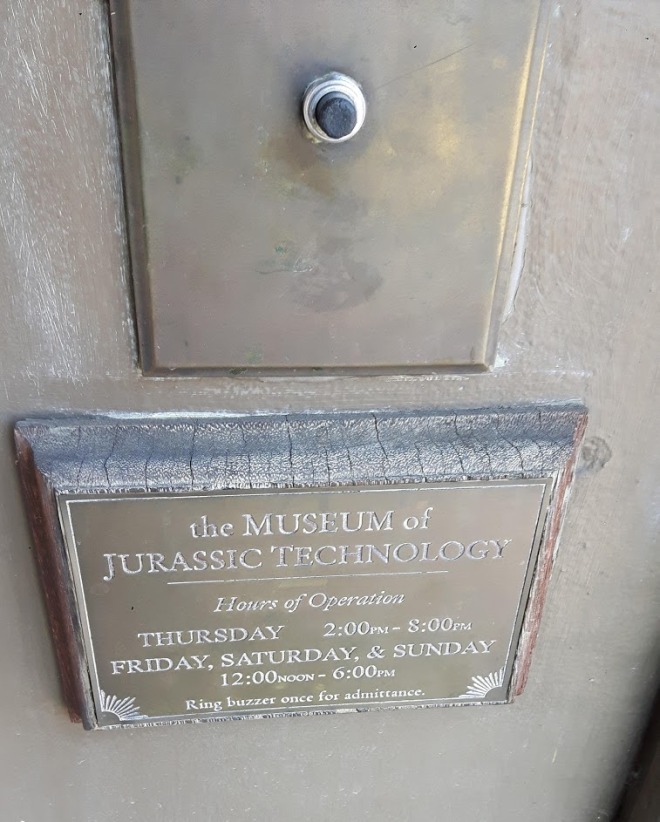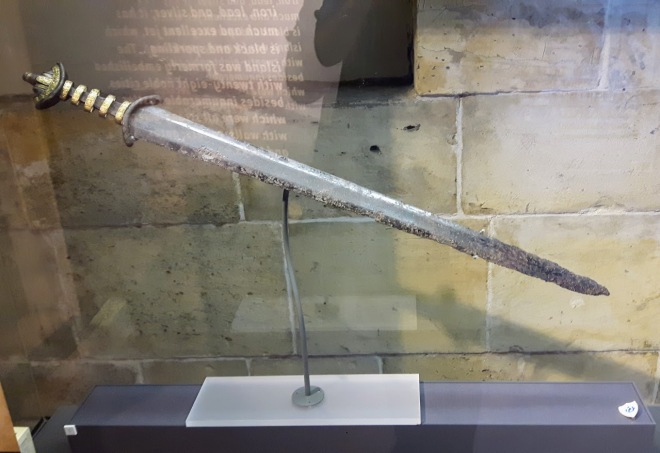Among the many other reasons that it’s been quiet around here, I have been on holiday. Like most of our long holidays, this one saw us heading back to California to visit our family; unlike most, on this trip we got to spend some time in southern California. Despite having lived in California for a long time, I’ve never really spent any time in the southern part of the state other than a few trips to Disneyland, so this was nice.
As part of my visit to LA (well, technically, Culver City), I went with an old friend to the Museum of Jurassic Technology, which I had often heard about. My memory is not perfect, so while I remembered that the museum existed and that I wanted to go to it, I didn’t really remember why.

Inside, the Museum of Jurassic Technology is … Fortean in the best sense. You might consider it as an art exhibit in the genre of museum; that’s the conclusion that I eventually came to. It includes a mixture of real things that are strange, things that mix fact and fiction, and things that are completely fictitious. It plays with the sometimes erudite, sometimes simplistic language of museum presentations, and it delights in presenting things that would seem ridiculous if they weren’t completely true, like its exhibits on Russian space dogs or Athanasius Kircher.
I realise this isn’t a very helpful description, but I don’t really know how else to describe it. It does an amazing job of replicating the hushed, almost reverential tone of a museum and using that to illuminate the history that intertwines museums, personal collections and carnival sideshows while also just presenting some flat-out nonsense in complete straight-faced kayfabe.
Very gradually as you go through the museum, you start to realise that a lot of it is phony. Is it the fact that one of the historical figures it covers is represented by a photograph of Charles Fort? Is it the slight inaccuracies in the story of the fungus-controlled ant? You think you’re wise to this thing. But honestly, I think the goal of the museum is to make you think that something real is fake. You figure out that this whole theory of memory thing is fiction, and that makes you cocky. This Konstantin Tsiolkovsky character couldn’t possibly be real, you think to yourself.
And that’s how they get you.
People sometimes say about fabulous stories, especially those that pass themselves off as real, that they draw people’s attention to what is genuinely strange and wonderful in our world. In my experience, that’s seldom true, but here I think it actually works.
Also you can enjoy a nice cup of tea in a peaceful roof garden, which is nice.




























